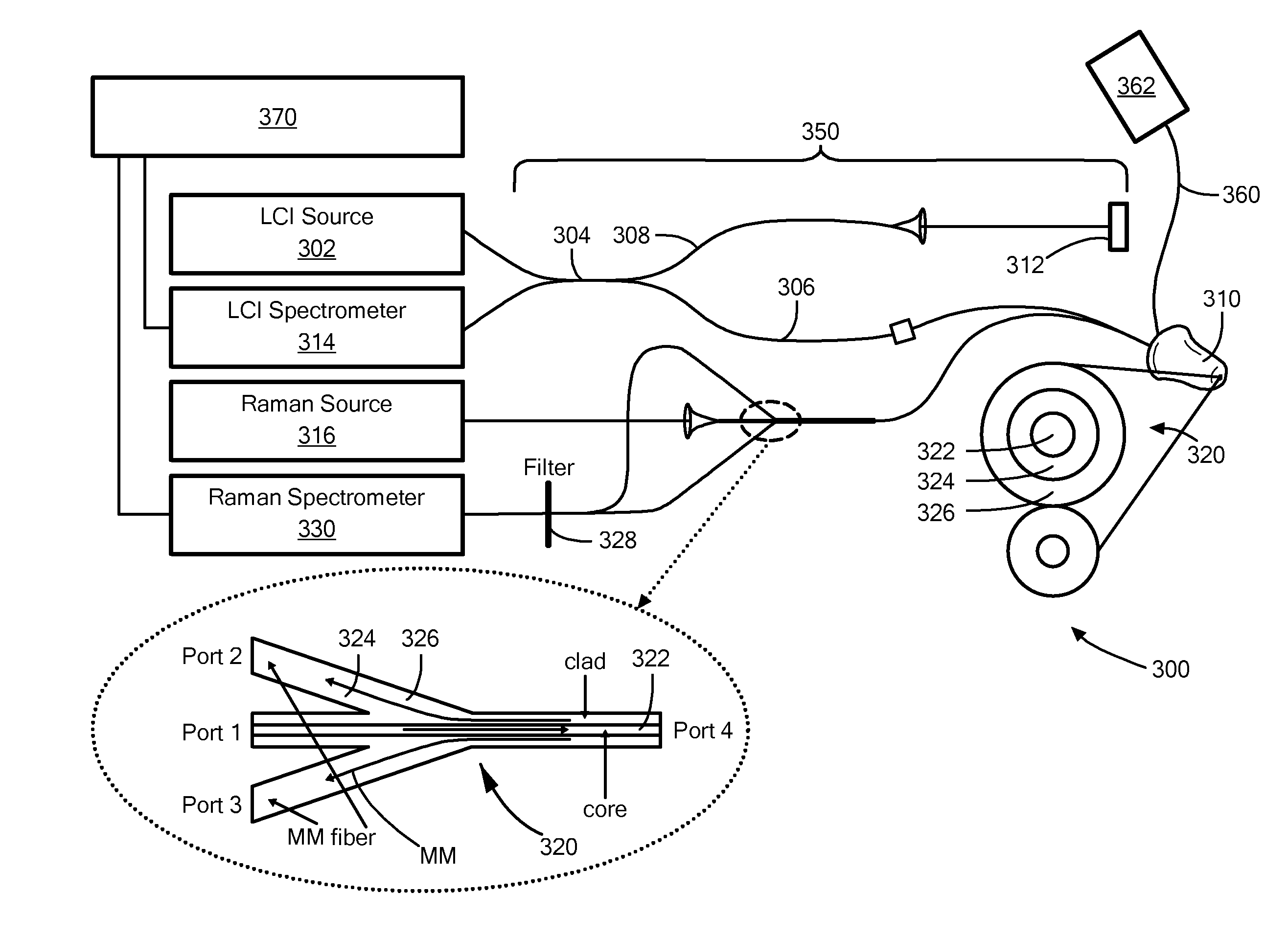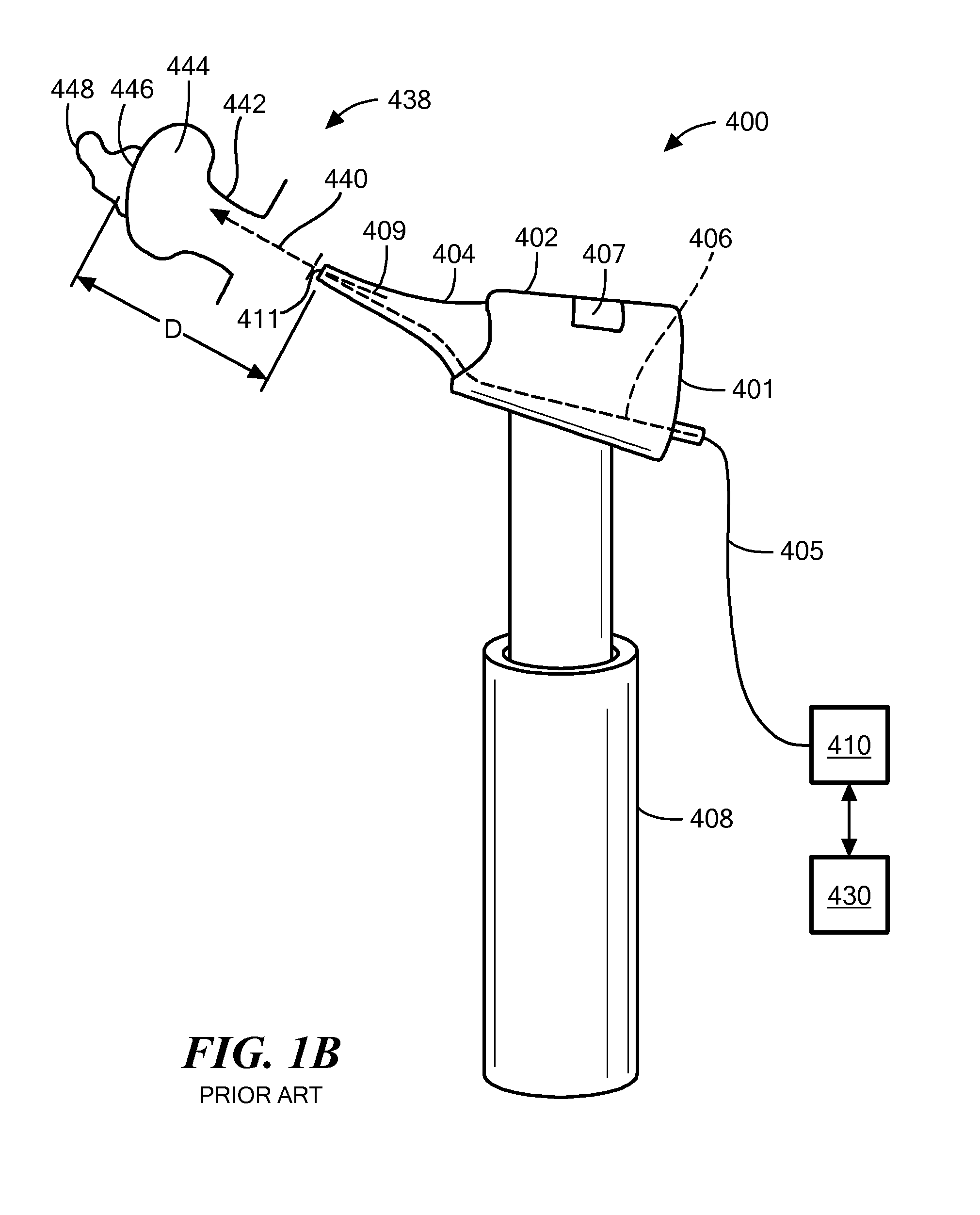Handheld Device for Identification of Microbiological Constituents in the Middle Ear
a microbiological and ear infection technology, applied in the field of optical identification of the microbiological origin of presenting ear infections, can solve the problems of ineffective treatment, overprescription of antibiotics, and inability to identify the microbiological origin of ear infections through video imaging
- Summary
- Abstract
- Description
- Claims
- Application Information
AI Technical Summary
Benefits of technology
Problems solved by technology
Method used
Image
Examples
Embodiment Construction
[0025]In accordance with embodiments of the invention, apparatuses and methods are provided for diagnosing and identifying microbiological material within the ear of a person. An otoscopic diagnostic system for jointly performing those functions has[0026]a. a source of substantially monochromatic excitation light;[0027]b. an otoscopic tip for abutment with the ear canal for directing the substantially monochromatic excitation light to a tympanic membrane of an ear of a person and for collecting Raman scattered light from the tympanic membrane and material behind the tympanic membrane and from material adjacent to the tympanic membrane;[0028]c. a spectrometer for receiving the Raman-scattered light, for resolving spectral features of the Raman-scattered light, and for generating a Raman signal; and[0029]d. a processor for receiving the Raman signal, and for generating therefrom a Raman spectrum of the tympanic membrane and the material behind the tympanic membrane and the material ad...
PUM
 Login to View More
Login to View More Abstract
Description
Claims
Application Information
 Login to View More
Login to View More - R&D
- Intellectual Property
- Life Sciences
- Materials
- Tech Scout
- Unparalleled Data Quality
- Higher Quality Content
- 60% Fewer Hallucinations
Browse by: Latest US Patents, China's latest patents, Technical Efficacy Thesaurus, Application Domain, Technology Topic, Popular Technical Reports.
© 2025 PatSnap. All rights reserved.Legal|Privacy policy|Modern Slavery Act Transparency Statement|Sitemap|About US| Contact US: help@patsnap.com



